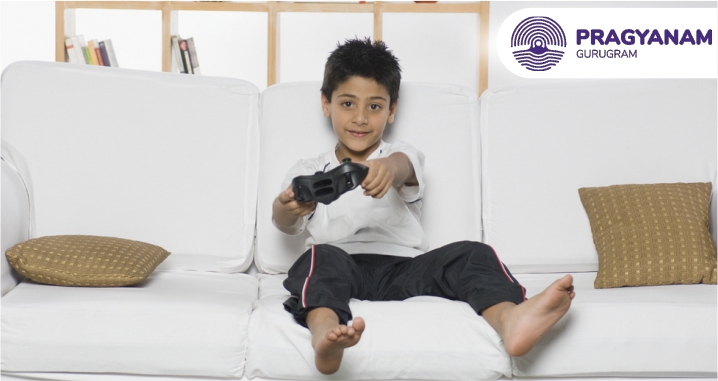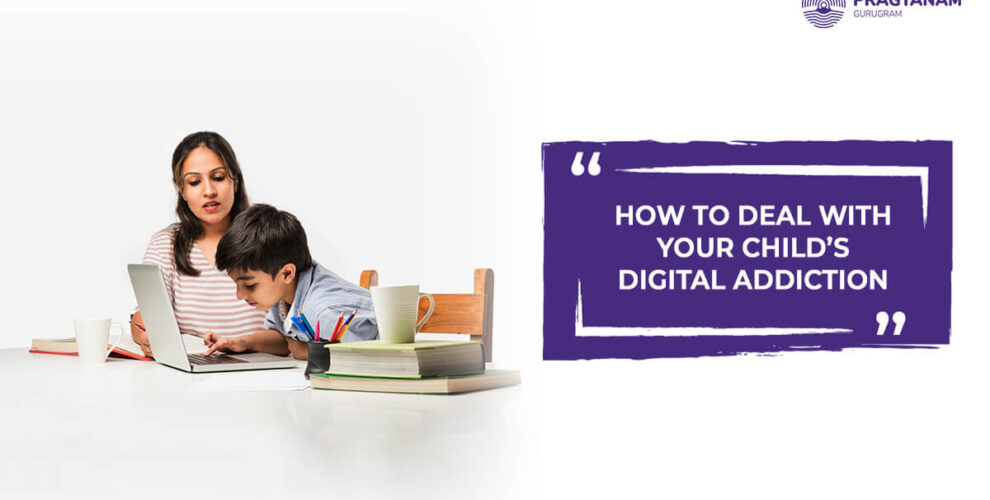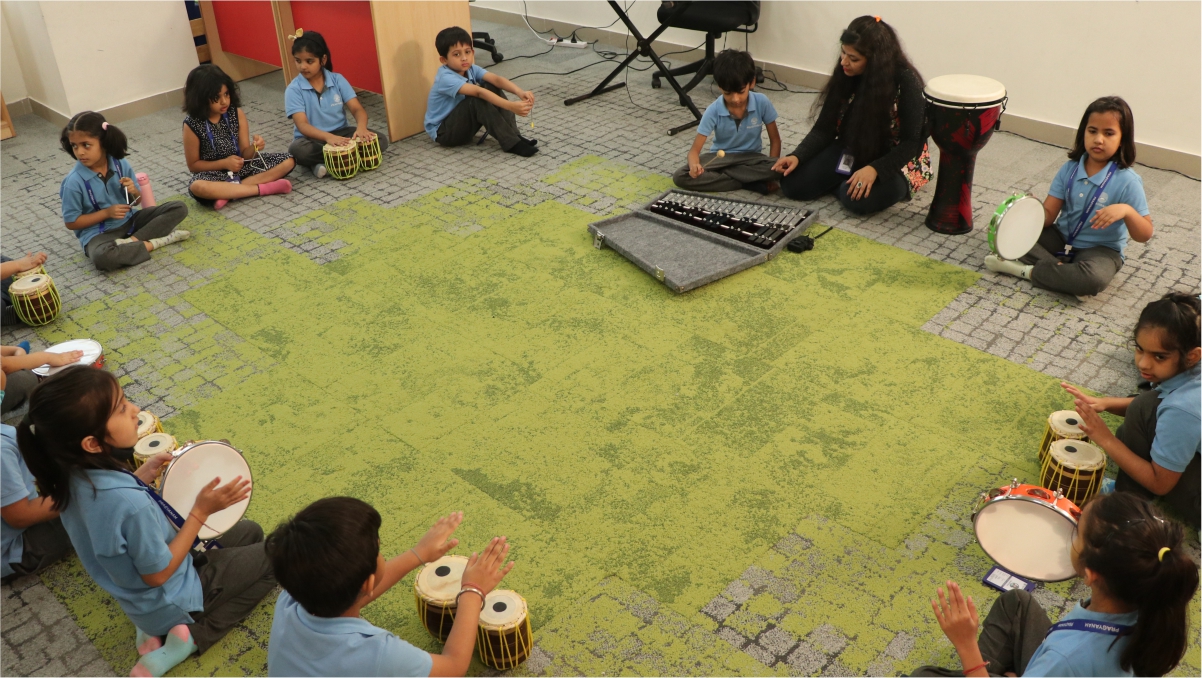
It is a common sight these days to view adults & children alike glued to their digital devices. So much so that we may not even think twice about this growing “addiction.” There may, however, reach a stage where the overuse of these digital devices becomes an acute problem. In fact, while so far the word addiction was associated with alcohol abuse and the abuse of substances, experts now recognize Internet Addiction Disorder (IAD) which is known to cause physical issues, neurological complications, psychological disturbances, and social problems. That its prevalence rate is growing across the world is an added fear. Here are some handy tips to address digital addiction from one of the best CBSE schools.
Table of Contents
Is Your Child’s Digital Addiction As Serious As Other Addictions?
In popular perception, internet addiction or digital addiction isn’t seen as being as serious as compared to addiction to alcohol, drugs, and more. In fact, it is often also believed that only people with low willpower can suffer from it. The reality, however, is quite different. The sheer amount of time that children spend on screens, as well as their resistance to cut back on screen time, is growing by alarming proportions. There have been enough & more instances where children are known to display a loss of interest in other activities. It interferes with their schoolwork, with socialization, so much so that daily activities such as having a bath or eating have also been known to have become an uphill battle.
Excessive use of technology is known to trigger the production of “ dopamine,” or what is popularly known as the feel-good chemical. In turn, what it does is that it offers instant gratification. The child, therefore, keeps chasing the highs of dopamine, which, in turn, keeps him hooked to his device. Any stressors in life also send them running to their devices. What you may also notice is that when it’s time to turn off the TV or put their device away, the child shows signs of irritability, mood changes, sleep difficulties, and even anxiety & depression. What you are witnessing are likely signs of withdrawal symptoms.

Symptoms of Overuse
Before we get to effective ways of dealing with the child’s internet or digital addiction, it will be worthwhile to look at some common symptoms of technology overuse. If you notice any of these symptoms, you sure need to take action.
Behavioral Symptoms
They do not like activities they enjoyed at one time
Most of the waking hours are spent online or glued to the device
They try to lie or cover up their excessive usage
Show signs of anger when asked to step away from the device
Physical Symptoms
- Tiredness
- Insomnia
- Change in physical appearance as they do not pay any attention to personal grooming
- Weight gain or loss
- Aches & pains
Mental Symptoms
- Poor attention spans
- Memory issues
- Unable to decipher reality from fantasy
Social Symptoms
- Isolation
- Mood Swings
- Issues with academic life

How to deal with overuse
Importantly, you need to figure out effective strategies to deal with the overuse. Here are some handy tips:
✔ Get them to realize the amount of time that they are spending online. Setting of timers when they start the use their devices can be a handy exercise. Sometimes the sheer data of the hours being spent can be an eye-opener. Importantly, with this data in hand you will be talking facts as opposed to their & your perception of time being spent on technology.
✔ Reducing device time gradually, as opposed to taking drastic measures such as confiscating their phones, works better. Setting reasonable limits, such as not using the device for more than 30 minutes at a stretch, not using the device during meal times, before sleeping & more, are key. It is important that you aim for short screen time sessions. The use of timers to end sessions or simply to stretch and move around is important.
✔ You need to make sure that digital technology is kept out of the bedrooms at night. This will ensure a number of sleep-related issues are addressed. In fact you need to have assigned tech-free zones within the house. The dining table, for one, needs to be totally tech-free. Meal times are best designated as family times, where everyone talks about their day and other issues, as opposed to everyone staring at their screens.
✔ Importantly, you need to offer them reasonable alternatives to the device time. Family sessions, playing games together, reading, and more can be viable alternatives. Exposing them to hobbies can be another great alternative. Enrolling them in sports activities, baking, painting, and more are all great options.
✔ It is important that you encourage face-to-face socialization. Organizing play dates, meeting friends in the park, or over sporting activities and other hobbies is an important aspect.
✔ It will also help to make tech a family affair. You can play or watch alongside the child. That it will help you bond with the child is a given! In the course of these sessions, just in case you find that the child’s tech acumen is higher than yours, it will also be worthwhile to learn from the child. It will go a long way in boosting the child’s confidence, your technology skills and tech speak, and your bond!
✔ Above everything, remember that children learn more from what they see than what they are told. It is important that you be an effective role model. It will not help the cause if you ask the child to follow limits but you are glued to your phone. Checking the phone every few minutes, spending long hours on it, being distracted all the time, and using the phone even while driving are strict no-nos. Besides, if the child feels that he is having to compete with the devices to attract attention, they will sooner or later take to the same pattern.
To sum up
It is important to remember that balance may look different for different children. So while you may want your child to follow digital rules just as your neighbor’s child does, as with everything else, comparisons will not work here too. What you will need is oodles of patience, empathy, and, where needed, also some tough love. Above everything, remember that despite your best efforts, if nothing seems to be working and the child’s tech usage is far from what is healthy, do not hesitate to take professional help. Meeting a trained professional who has experience in dealing with the issues that come with the use of excessive technology can make all the difference.







Leave a Reply